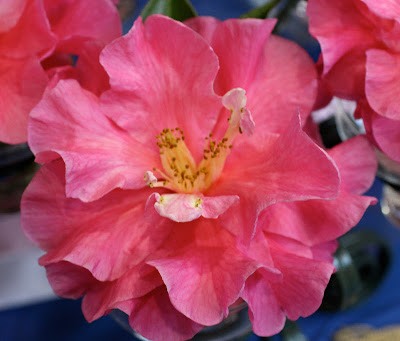I grow this large sprawling shrub/climber in 30cm. pots, and, for the past week or so, a large bud at the top of one plant has remained in suspended animation, like a half blown up pale creamy yellow balloon. At this time of year it may be too cold for it open and reveal the coconut scented 'cup of gold' style flower but it provides a wonderful contrast to the new leaves below it which are vibrant purple as they emerge before turning ivory white and pale green on maturity.
This plant is native to Mexico and like other members of the Solanaceae Family it is poisonous , though this should not be a deterrent from growing it. While the plain green form is a vigorous climber to 20 metres or more and needing a large garden or sturdy structure where it can spread to its hearts content, this variegated form is less rampant especially in milder climates. Severe frost will cause most of the leaves to drop off and stems may die back and blacken but growth returns quickly when the weather warms up. As a pot plant it is a bit ungainly and forms a network of thick untidy branches which can never be pruned to a neat shape, so, if used in this way it needs a foreground plant of neat and rounded appearance to hide its 'legs'. It is otherwise very forgiving of neglect and has low water and fertilizer requirements.2017 update: I have some plants available.

















































